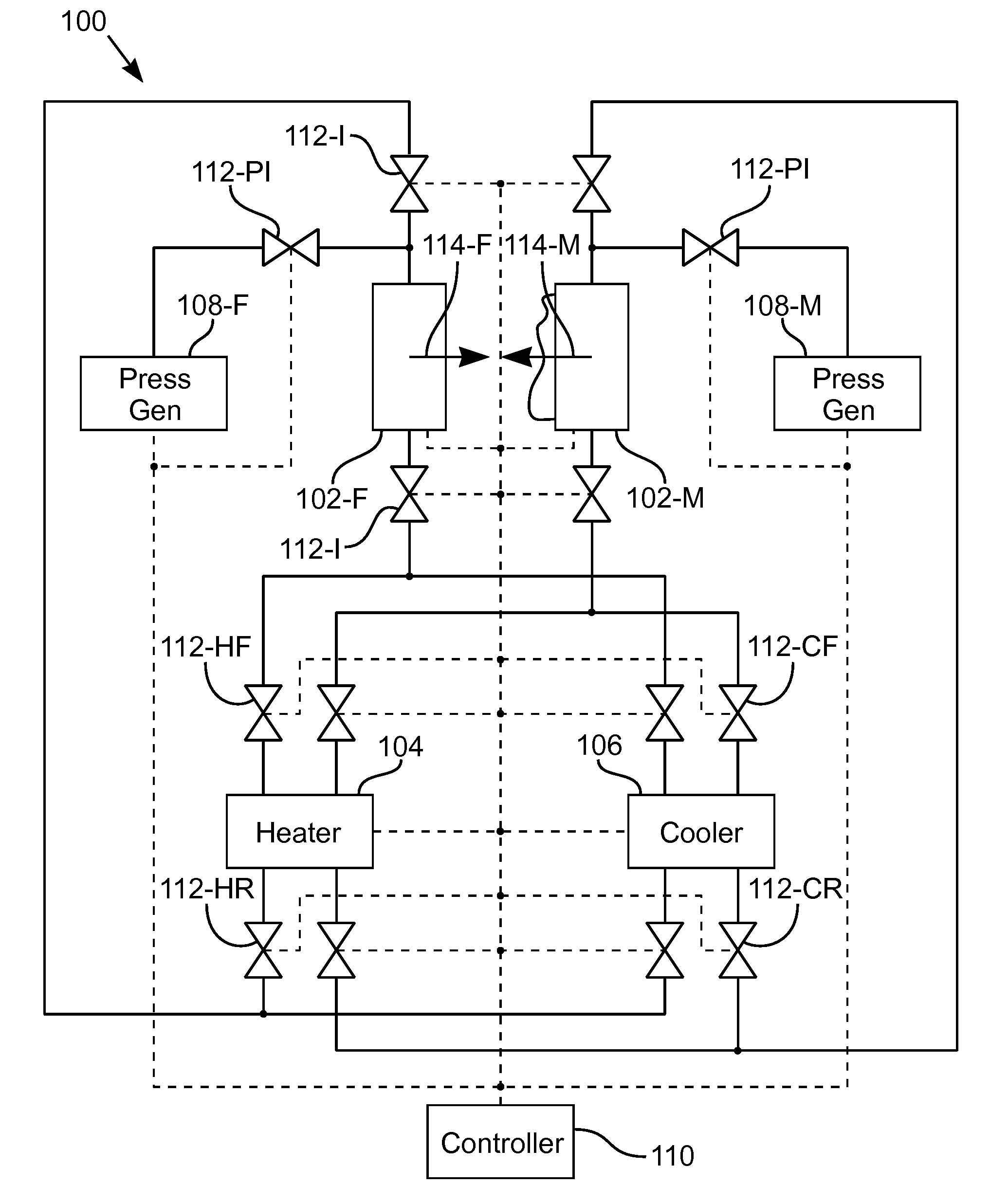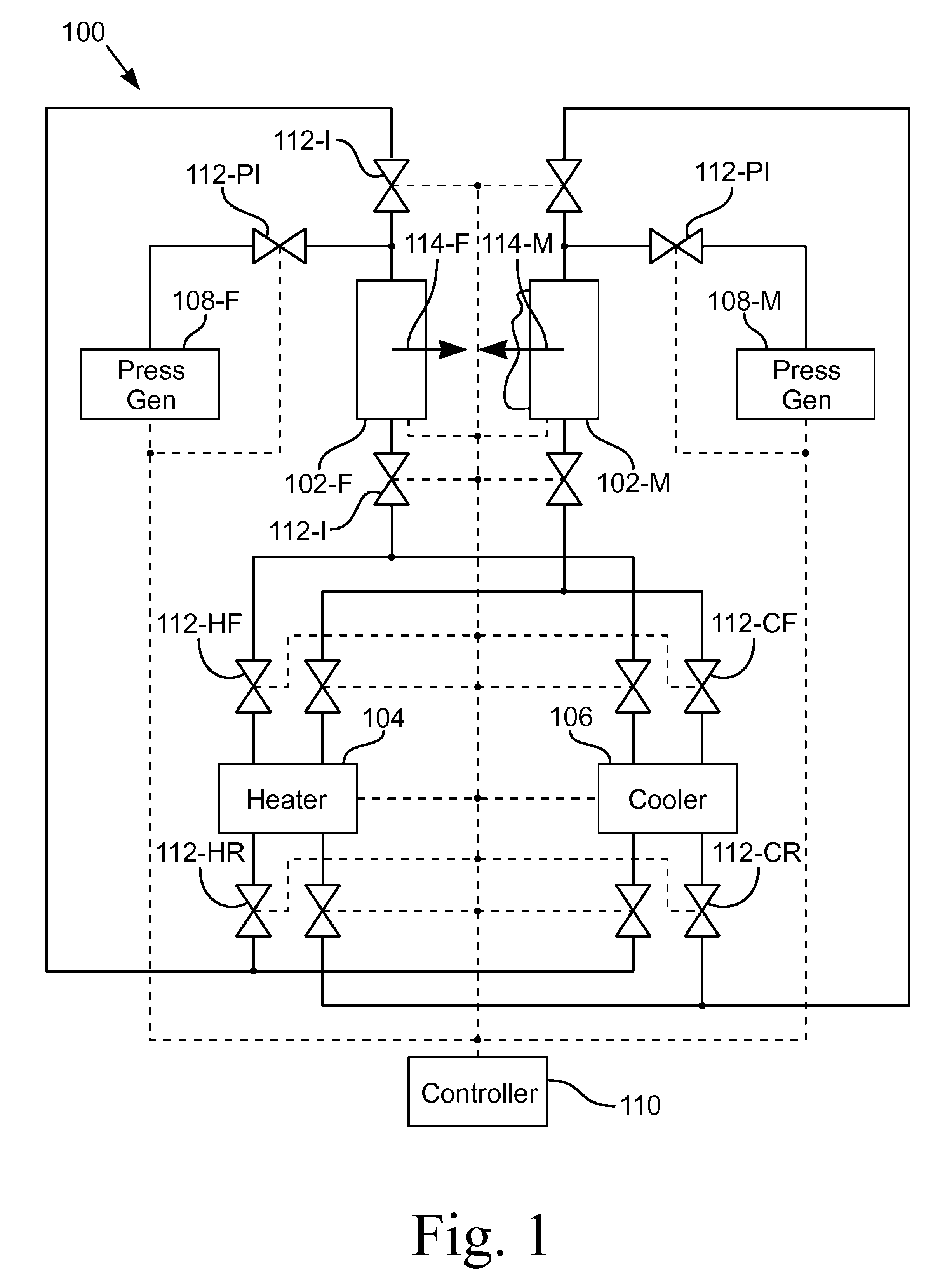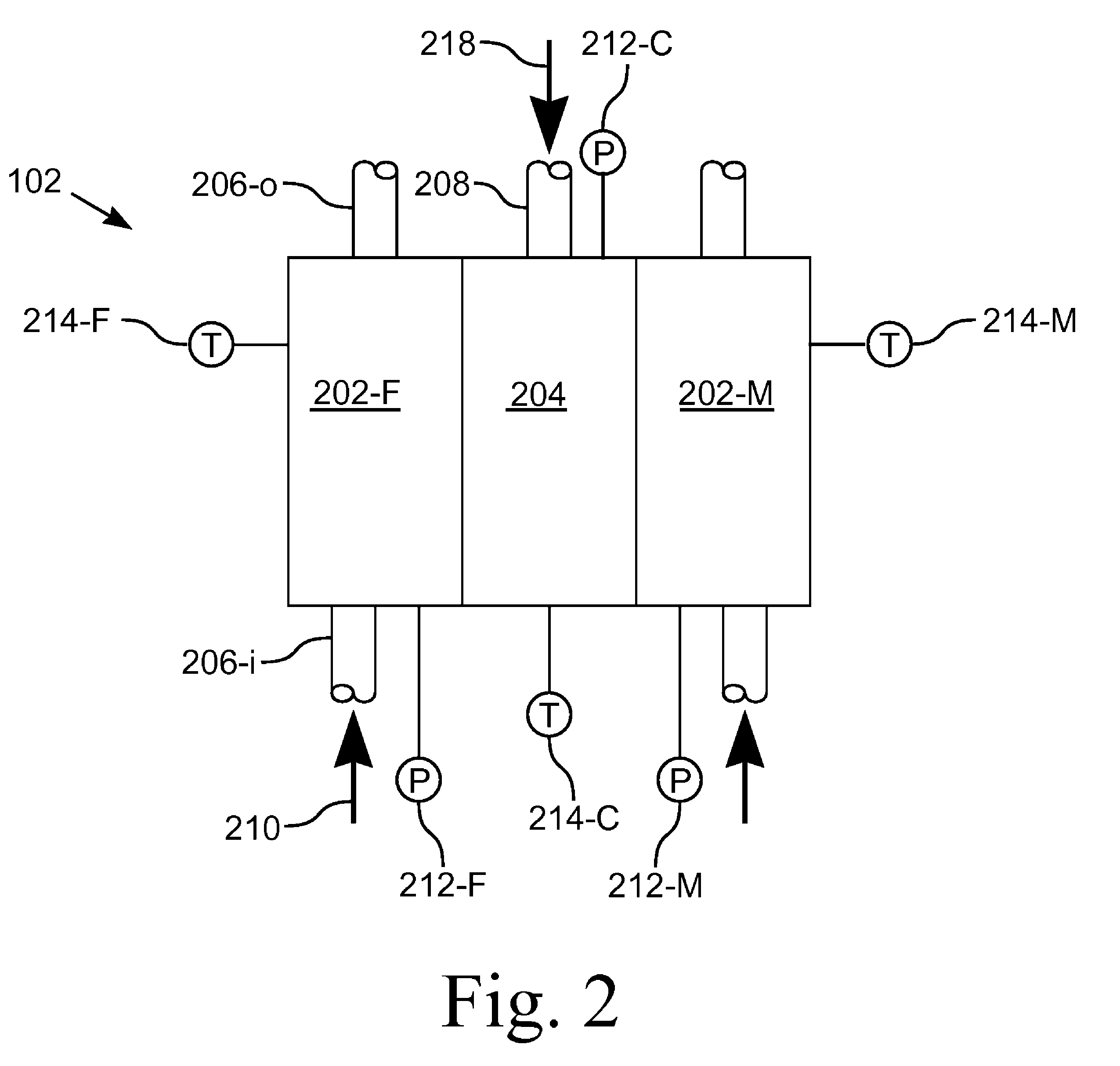Pressure compensating molding system
a molding system and pressure compensation technology, applied in the field of molding systems, can solve the problems of difficulty in controlling the mold temperature, large mold volume and structural strength, and high thermal mass of molds, and achieve the effect of reducing the heat loss of molding materials
- Summary
- Abstract
- Description
- Claims
- Application Information
AI Technical Summary
Benefits of technology
Problems solved by technology
Method used
Image
Examples
Embodiment Construction
[0030]An apparatus for and a method of operating a pressure compensating molding system 100 are disclosed. It is desirable to maintain the mold die surfaces 402 at a high temperature during the beginning of the molding cycle in order to maintain the molding material 218 in a molten or semi-molten state as it fills the mold cavity 204. With a higher and more consistent temperature across the mold die surfaces 402, less pressure is required for forcing the molding material 218 into the mold and less imperfections on the molded component surface will result. Although the following description uses injection molding as an example, the molding system 100 is suitable for other plastic molding processes, such as structural foam molding low pressure molding, transfer molding, and blow molding. The system 100 is also suitable for processing thixotropic plastic and metal alloys.
[0031]FIG. 1 illustrates a piping and control diagram of one embodiment of the pressure compensating molding system ...
PUM
| Property | Measurement | Unit |
|---|---|---|
| mold pressure | aaaaa | aaaaa |
| cavity pressure | aaaaa | aaaaa |
| pressure | aaaaa | aaaaa |
Abstract
Description
Claims
Application Information
 Login to View More
Login to View More - R&D
- Intellectual Property
- Life Sciences
- Materials
- Tech Scout
- Unparalleled Data Quality
- Higher Quality Content
- 60% Fewer Hallucinations
Browse by: Latest US Patents, China's latest patents, Technical Efficacy Thesaurus, Application Domain, Technology Topic, Popular Technical Reports.
© 2025 PatSnap. All rights reserved.Legal|Privacy policy|Modern Slavery Act Transparency Statement|Sitemap|About US| Contact US: help@patsnap.com



